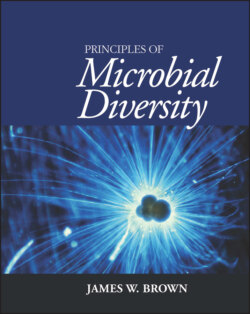Читать книгу Principles of Microbial Diversity - James W. Brown - Страница 44
The standard: small-subunit ribosomal RNA
ОглавлениеIn most cases, the best molecular clock for phylogenetic analysis is the small-subunit ribosomal RNA (SSU rRNA) (Fig. 3.2). This sequence is always the best starting point; only after you know where your organism resides in an SSU rRNA phylogenetic tree can you decide what other sequences might provide additional information (see chapter 6 for alternatives).
The SSU rRNA is so often the best sequence of choice for the following reasons.
It is present in all living cells.
It has the same function in all cells.
It comprises 1,500 to 2,000 residues—large enough to be statistically useful but not too large to be onerous to sequence.
Figure 3.2 The Escherichia coli SSU rRNA secondary structure. (Courtesy of Robin Gutell. Adapted from Cannone JJ, Subramanian S, Schnare MN, Collett JR, D’Souza LM, Du Y, Feng B, Lin N, Madabusi LV, Müller KM, Pande N, Shang Z, Yu N, Gutell RR, BMC Bioinformatics 3:2, 2002. doi:10.1186/1471-2105-3-2) doi:10.1128/9781555818517.ch1.f1.11B
It is made up of ca. 50 independently evolving helices and ca. 500 independently evolving base pairs.
It is conserved highly enough in sequence and structure to be easily and accurately aligned.
It contains both rapidly and slowly evolving regions—the rapidly evolving regions are useful for determining close relationships, whereas the slowly evolving regions are useful for determining distant relationships.
Horizontal transfer of rRNA genes is exceedingly rare (most genes of the central information-processing pathways of the cell are also resistant to horizontal transfer).
Huge data sets of sequences, alignments, and analysis tools are available.
